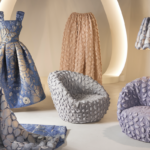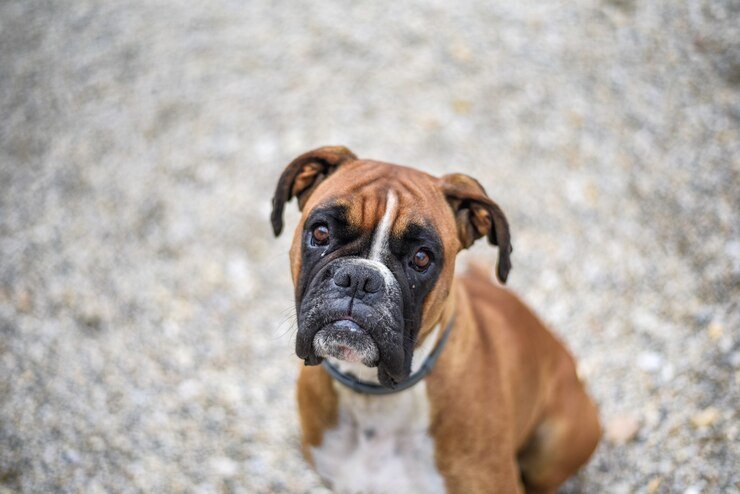The Red Nose Pitbull is a distinct and well-loved variety of the American Pitbull Terrier breed, known for its characteristic red-colored nose, loyal temperament, and muscular build. While often misunderstood due to misconceptions about the breed, Red Nose Pitbulls are affectionate, intelligent, and make excellent companions when raised and cared for properly. This article explores the unique traits, care requirements, and the true nature of the Red Nose Pitbull, offering insights into why they can be such rewarding pets.
History and Origin
The Red Nose Pitbull has a rich history that traces back to Ireland in the 19th century. It belongs to the “Old Family Red Nose” (OFRN) strain, a line of American Pitbull Terriers that were specifically bred for their distinctive red noses and reddish coat colors. These dogs were originally used in blood sports, but as society evolved, so did their role, transitioning from working dogs to beloved companions. Today, the Red Nose Pitbull is recognized for its historical significance within the breed and remains a favorite among enthusiasts who appreciate its unique appearance and loyal nature.
Physical Characteristics
Red Nose Pitbulls are medium to large-sized dogs, with a strong, muscular build that showcases their athleticism. They typically weigh between 30 to 65 pounds and stand around 18 to 22 inches tall at the shoulder. Their coat is short, smooth, and usually comes in shades of red, fawn, or brown, often accompanied by white markings on the chest and feet. The most defining feature, as their name suggests, is their reddish-brown nose, which, along with amber or light brown eyes, gives them a striking and memorable appearance.
Temperament and Personality
Contrary to some stereotypes, Red Nose Pitbulls are known for their friendly and affectionate nature. They are incredibly loyal to their families and thrive on human interaction. These dogs are intelligent, eager to please, and highly trainable, making them suitable for various roles, from family pets to working dogs. Red Nose Pitbulls are also known for their energetic and playful demeanor, which makes them great companions for active individuals or families with children. However, their strong will and high energy levels require an owner who can provide firm, consistent training and ample exercise.
Training and Socialization
Training and socialization are crucial for Red Nose Pitbulls, especially given their strength and energy. Early socialization helps them become well-adjusted dogs who are comfortable in various environments and around different people and animals. Positive reinforcement training methods work best with this breed, as they respond well to praise and rewards. Obedience training is essential to establish boundaries and ensure they grow into well-mannered adults. Activities that stimulate their minds, such as agility training or puzzle toys, are also beneficial for their mental health.
Health and Lifespan
Red Nose Pitbulls are generally robust dogs, but they can be prone to certain health issues common in the breed. These include hip dysplasia, heart disease, and skin allergies. Regular veterinary check-ups, a balanced diet, and proper exercise are key to maintaining their health. The average lifespan of a Red Nose Pitbull is around 12 to 15 years, but with good care, they can live even longer. Responsible breeding is also important to minimize the risk of inherited health conditions.
Care and Maintenance
Caring for a Red Nose Pitbull is straightforward but requires dedication. Their short coat is low-maintenance, requiring only regular brushing to remove loose hairs and keep their coat shiny. Bathing should be done as needed, typically every few months, unless they get particularly dirty. Regular exercise is crucial for this active breed; they thrive on daily walks, playtime, and mental stimulation. Without adequate exercise, they may become bored or restless, leading to destructive behavior. Their diet should be high in protein to support their muscular build and active lifestyle.
Red Nose Pitbull as a Family Pet
Red Nose Pitbulls can make excellent family pets when properly trained and socialized. They are known for being affectionate and protective of their families, including children. However, due to their strength and energy, it’s important to supervise interactions with young children and ensure the dog is well-trained. They can also coexist with other pets if introduced carefully and with proper socialization from an early age. It’s essential to provide them with a structured environment where they understand their role in the family pack.
Misconceptions and Myths
Red Nose Pitbulls, like other Pitbulls, are often subject to misconceptions and myths, largely due to their history and portrayal in the media. Many people mistakenly believe that all Pitbulls are inherently aggressive or dangerous, but this is not true. With responsible ownership, proper training, and socialization, Red Nose Pitbulls are loving, gentle, and loyal companions. Education and awareness are key to dispelling these myths and helping the public understand the true nature of the breed.
Legal and Ethical Considerations
Due to breed-specific legislation (BSL) in some areas, owning a Red Nose Pitbull may come with legal restrictions. It’s important for potential owners to be aware of local laws and regulations regarding Pitbull ownership. Additionally, ethical considerations include adopting from reputable breeders or rescues and ensuring that the dog is raised in a humane and responsible environment. Supporting breeders who prioritize health, temperament, and responsible breeding practices is crucial to the well-being of the breed.
Adoption and Breeders
When considering adding a Red Nose Pitbull to your family, adopting from a rescue or shelter is an excellent option, as many Pitbulls are in need of loving homes. If choosing to buy from a breeder, it’s important to do thorough research to find one who is reputable and ethical. Look for breeders who perform health screenings, provide proper socialization for puppies, and are transparent about the dog’s lineage. Avoid breeders who prioritize appearance over health or temperament.
Differences Between Red Nose and Blue Nose Pitbulls
The primary difference between Red Nose and Blue Nose Pitbulls lies in their coloring. While Red Nose Pitbulls have a reddish-brown nose and coat, Blue Nose Pitbulls have a grayish-blue nose and coat. Both varieties are part of the American Pitbull Terrier breed and share similar traits in terms of temperament and behavior. The preference for one over the other is often a matter of personal taste, as both types can make wonderful pets.
Frequently Asked Questions (FAQs)
- Are Red Nose Pitbulls more aggressive than other dogs?
- No, Red Nose Pitbulls are not inherently more aggressive than other breeds. With proper training and socialization, they can be friendly, loyal, and well-behaved pets.
- How long do Red Nose Pitbulls live?
- On average, Red Nose Pitbulls live between 12 to 15 years, but with good care, some may live even longer.
- Are Red Nose Pitbulls good with children?
- Yes, Red Nose Pitbulls can be excellent with children, especially if they are well-trained and properly socialized from a young age.
- Do Red Nose Pitbulls require a lot of exercise?
- Yes, they are an active breed that requires regular exercise to maintain their physical and mental health.
- How can I find a reputable Red Nose Pitbull breeder?
- Research breeders who prioritize health, temperament, and ethical breeding practices. Look for those who provide health clearances and socialize their puppies.
- Can Red Nose Pitbulls live in apartments?
- Yes, Red Nose Pitbulls can live in apartments, provided they receive sufficient exercise and mental stimulation.
The Future of the Red Nose Pitbull
The future of the Red Nose Pitbull, like that of all Pitbulls, depends largely on public perception, responsible ownership, and breeding practices. As awareness grows about the true nature of these dogs, there is hope that they will be increasingly recognized for their positive traits and loyal companionship. Advocacy for fair treatment and against breed-specific legislation will also play a critical role in ensuring the breed’s continued popularity and well-being.
Conclusion
The Red Nose Pitbull is a unique and loyal breed that offers companionship, intelligence, and affection to those who understand and appreciate its qualities. While they require responsible ownership, training, and care, the rewards of having a Red Nose Pitbull as a part of your family are immeasurable. By understanding their needs and dispelling myths, owners can ensure that their Red Nose Pitbulls lead happy, healthy, and fulfilled lives.









